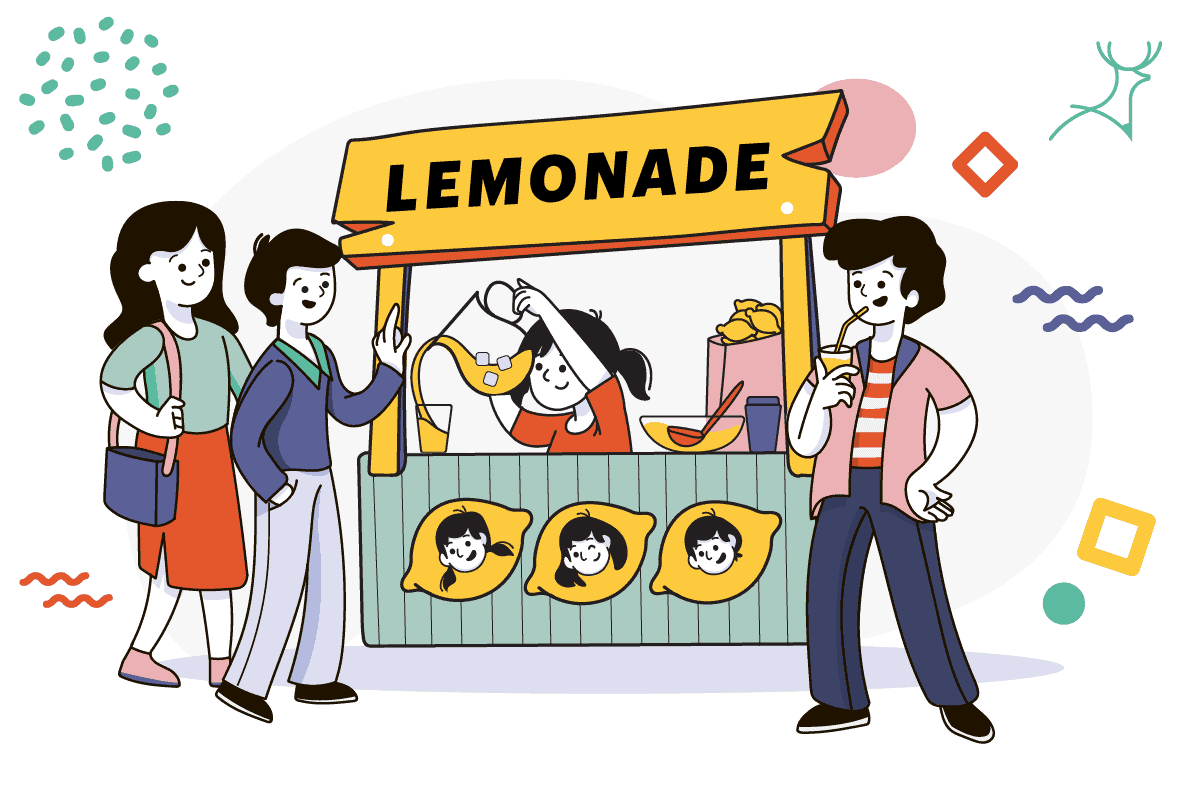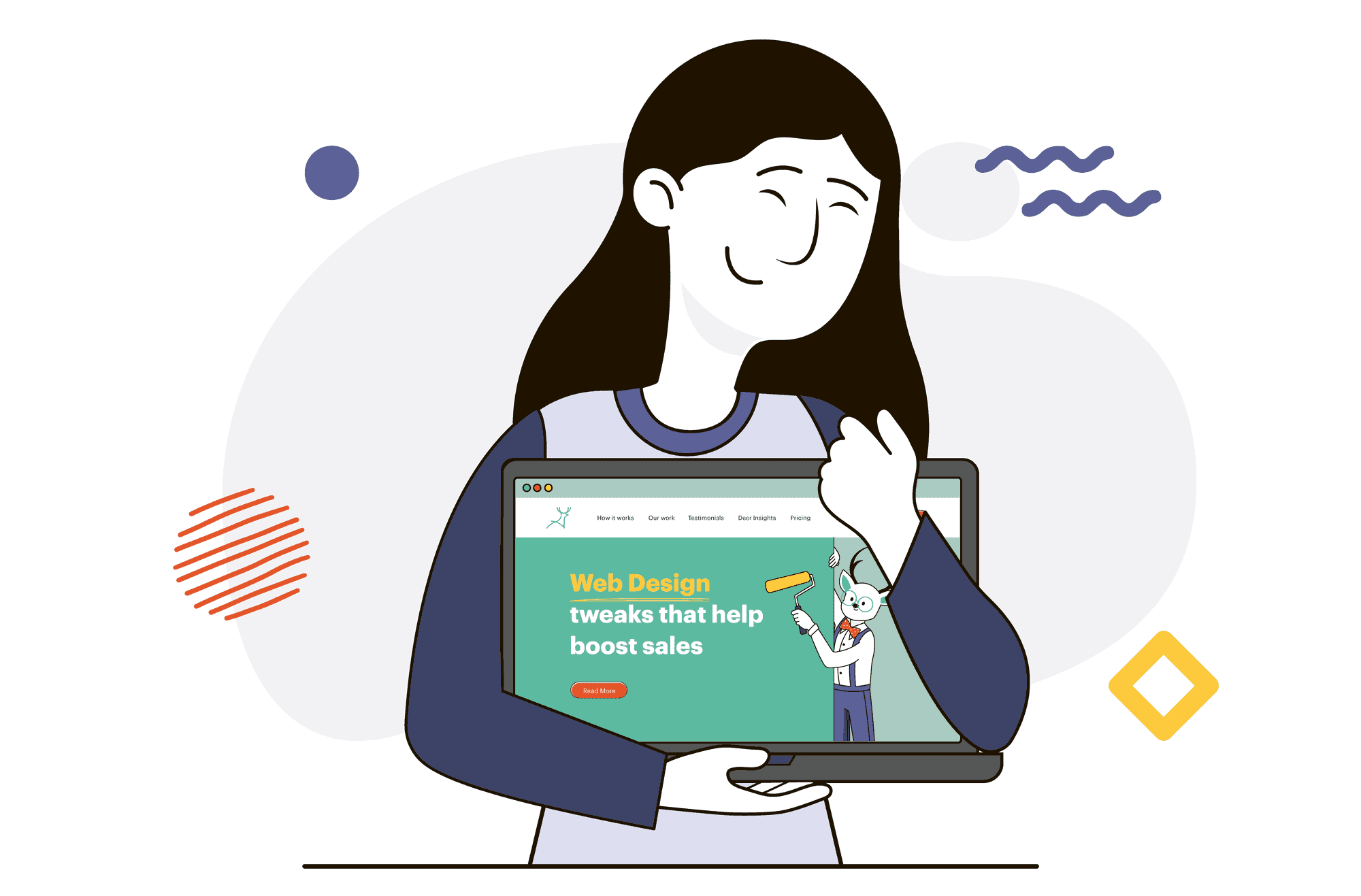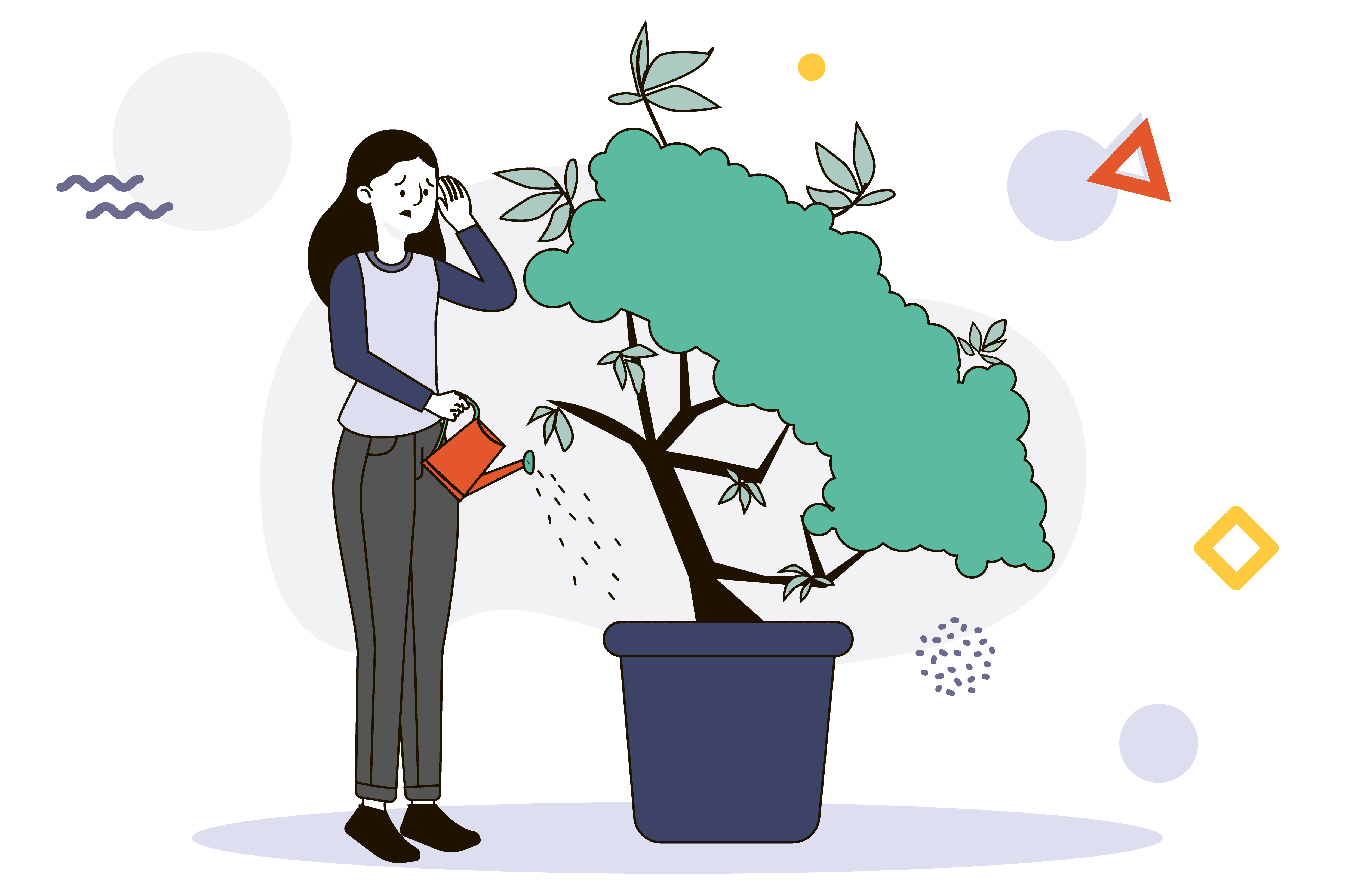Logo design process: from abstract idea to completed design

When my siblings and I first thought of selling lemonades during the summer of 2000, we got so excited that we spent 2 days trying to design a logo. Our logo ended up with three cartoon heads symbolizing the three of us.
We printed out a big banner and had the logo added to the cups. Even though everything looked great, after selling a few, I noticed that the customers didn’t drink all of the juice. When I tasted the mixture, I found that it was far too sour!
The news of the face-crushing lemonade quickly spread throughout the neighbourhood, and we didn’t make much money.
75% of people recognize a brand by its logo
In our defence, we wanted our stand to be easily recognizable, which is why we put a lot of thought into our logo. We knew that our logo would give us an edge over Johnny’s Lemonade Stand on the next block, which had no banner at all.
A well-designed logo is the first thing most people notice when they visit a site or see products in person. It should also be recognizable in small sizes—think Twitter avatars or Instagram icons.

A logo design often starts with one unique idea that makes sense for your brand and how you want it to be portrayed by your target market. That idea can be anything from a colour scheme to an icon, shape, or text.
Once the ideas have been gathered and presented, it is the designer’s job to transform them into something attractive to the eye of the public.
Brainstorming for the logo’s main idea
When you’re ready to create a logo, consider the target audience, brand personality, and goals of the business.
Although the lemonade activity was purely fun, many startup owners fall into the same trap. They get so hyped with how their company will look that they neglect to plan for what brings in the real money – the customers.
Brainstorming: Brainstorming is a fast-paced activity in which you and your team generate a large number of design concepts in order to find the one that best represents your company’s brand.
Narrowing: Following the brainstorming, narrow those ideas down to a few concepts that will work best for your company’s vision and goals.
The next step is to figure out which logo designs will work best for your target markets. It will showcase the desired image for the company and the message you want to convey to customers.
Once you’ve figured out those things, it’s time to find a designer or create your own!
Request for a logo that fits your business
Designers often look at past trends, their success rate, and the client’s personality to create a logo that is appealing, memorable, and relevant. Here is a quick guide on how to get started:
- Keep it simple! The simpler a logo is, the more flexible it can be used in different contexts.
- Choose an appropriate font that complements your design and reflects the image you want to project.
- Select 2-3 primary colours that work well together and represent your company’s personality.
Still too complex? If you’re a non-designer, you need the help of a design professional. Or else, you spend lots of time second-guessing your choices and accomplishing nothing.
How we create a logo here at Deer Designer
Without a grain of sand, an oyster couldn’t make a pearl.
Without a dot, Georges Seurat couldn’t finish his pointillism masterpiece.

Without your company’s goals or vision, no matter how small or simple it is, a designer can’t make the logo you’ll like.
This is the direction your design team needs to get started on the logo. If you are concerned about its final look, you must provide specific instructions to the dot.
However, if you want your designer to create something out of the ordinary, let them know and they’ll surprise you.
You can also collect images, colours, and typography that grab your attention and share them with your designer. They know how to put these pieces together like a puzzle because they are professionals.
They can design logo variations for you, and you can request revisions until you are happy with the final design.
But wait, there’s more!
Your design team will then compile the information into a branding guide for you and your marketing team to use.
This document will explain how to use the logo correctly so that it can be used consistently throughout your marketing and advertising campaigns.
All eyes are on
Designing a logo is an art that involves intuition, dedication, and passion. Because the logo is the key to brand recognition, the process can be complex.
Brands can benefit greatly from recognition. It can mean the difference between a brand becoming a household name and simply fading into irrelevance.
Unfortunately, there is no magic button or shortcut for creating a perfect logo. You must ensure that it is meaningful and resonates with the audience.
One of the first design requirements for any business is a logo. This is why it is critical to hire professionals to do it for you.
It will not only ensure that you get the best original design, but it will also save you time, allowing you to focus on developing other money-making processes for your company.


